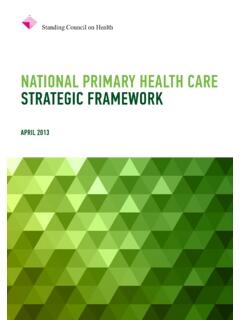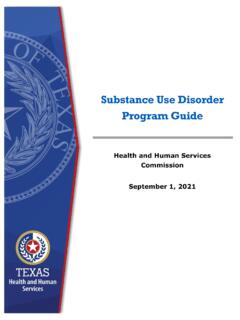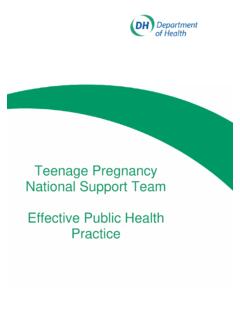Transcription of Office of Minority Health - CMS
1 Paving the Way to Equity: A Progress Report (2015-2021) 2 Centers for Medicar e & M edic aid Ser vices Offic e of Mi norit y Healt h 2015-2020 Table of Contents Executive Summary .. 3 Introduction .. 6 The CMS Equity Plan for Improving Quality in Medicare .. 7 CMS Equity Plan for Medicare: Priority Areas .. 9 Measuring Progress .. 10 Evaluation Goal .. 10 Evaluation Questions .. 11 Limitations of This Report .. 11 Increasing Understanding and Awareness of Disparities .. 11 CMS Expanded the Collection, Reporting, and Analysis of Standardized Data .. 12 CMS Developed Resources to Increase the Health Care Workforce s Understanding of Disparities.
2 15 Gaps, Needs, and Next Steps To Increase Understanding and Awareness of Disparities . 17 Developing and Disseminating Solutions to Achieve Health Equity .. 18 CMS Evaluated Disparities Impacts and Integrated Equity Solutions across CMS Programs .. 18 CMS Developed and Disseminated Promising Approaches to support the Health Care Workforce in Addressing Health Disparities .. 20 Gaps, Needs, Next Steps to Achieve Health Equity By Developing and Disseminating Solutions .. 25 Implementing Sustainable Actions to Achieve Health 25 CMS Leveraged Qualitative and Quantitative Research Findings to Improve Programs and Policies to Reduce Disparities.
3 26 CMS Convened and Mobilized Partners to Take Action on Disparities .. 28 Gaps, Needs, and Next Steps to Implement Sustainable Actions .. 30 Paving the Way to Equity: A Progress Report (2015-2021) 3 Executive Summary Disparities in Health and Health care persist despite decades of research and widespread efforts to improve Health in the United Certain populations including racial and ethnic minorities, sexual and gender minorities, people with disabilities, and individuals living in rural areas are more likely to experience worse Health outcomes, limited access to Health care services, and lower quality of care than the general ,iii,iv,v These disparities are reflected among vulnerable Medicare beneficiaries.
4 These individuals typically have lower preventive care utilization, limited access to chronic disease management, lower patient experience scores, and higher rates of hospital readmissions and chronic disease compared to their non- Minority ,vii,viii In 2015, in recognizing these disparities and seeking to close gaps in Health care access, quality, and outcomes among those CMS serves, the agency developed the first-ever CMS Equity Plan for Improving Quality in Medicare (CMS Equity Plan for Medicare). This plan provides an action-oriented, results-driven path for achieving Health equity by focusing on populations that experience disproportionately high burdens of disease, worse quality of care, and barriers to accessing care specifically, racial and ethnic minorities, sexual and gender minorities, people with disabilities, and individuals living in rural areas.
5 CMS developed this strategic approach to addressing disparities to support and advance work already underway within the agency and among partners. This includes CMS network of quality improvement partners, federal, state, local, and tribal organizations, Health care providers, Health plans, individuals and families, researchers and policymakers, and other stakeholders invested in achieving Health equity among Medicare beneficiaries. The CMS Equity Plan for Medicare focuses the agency and external stakeholders on results, unleashing innovation, and empowering patients, while eliminating disparities among those we serve.
6 The CMS Equity Plan for Medicare reflects CMS Path to Equity, an organizing framework with three core elements: 1) increasing understanding and awareness of disparities; 2) developing and disseminating solutions to achieve Health equity; and 3) implementing sustainable actions to achieve Health equity. CMS uses this framework to guide Health equity work within the agency and with external partners. This report describes some of the key ways CMS has demonstrated progress on the Path to Equity between 2015 and 2021, including: Paving the Way to Equity: A Progress Report (2015-2021) 4 Increasing Understanding and Awareness of Disparities CMS expanded the collection, reporting, and analysis of standardized data through publication of reports, public data sets, increased access to CMS data for researchers, and data visualization products.
7 These resources allow users to see variations across communities. They also empower users to enhance their own data collection and analysis to deliver results. For example in 2016, CMS began annually releasing data and reports on the Medicare Advantage (MA) population stratified by race and ethnicity. In 2018, CMS expanded this effort with the annual publication of its Rural-Urban Disparities in Health Care in Medicare report. These tools and reports are broadly used as of October 2020, the Mapping Medicare Disparities Tool has been used by over 39,800 individuals to learn more about local Health disparities and identify opportunities for improvement.
8 CMS produced numerous resources to increase the Health care workforce s understanding of disparities and of ways to improve patient experience, and disseminated research findings on the drivers of disparities and best practices on the provision of culturally and linguistically appropriate services (CLAS). Developing and Disseminating Solutions to Achieve Health Equity CMS focused on results, evaluating disparities impacts and integrating equity solutions across programs through the development and implementation of the CMS Disparities Impact Statement. The CMS Health Equity Technical Assistance Program is available to support quality improvement partners, providers, and all other CMS stakeholders.
9 Stakeholders can ask questions about how to embed Health equity and reduce disparities among enrollees and beneficiaries they serve. From its inception in 2017 through October 2020, the Health Equity TA team has responded to over 278 technical assistance requests from stakeholders in 39 states as well as Washington, DC, and Puerto Rico. CMS developed and disseminated innovative and promising approaches to support the Health care workforce in addressing Health disparities and improving the patient experience through provider-focused, accredited trainings supported by the Medicare Learning Network and other platforms.
10 Nearly a dozen provider-focused guides have been produced to help practices take strategic, step-by-step approaches to improving care for vulnerable communities. CMS responded to the Coronavirus (COVID-19) pandemic and public Health emergency through listening sessions, creation of new resources, developing Medicare COVID-19 data snapshots to indicate impact on Minority populations, and helping to accumulate all existing resources for Minority populations, providers serving Minority populations, and anything in additional languages. Implementing Sustainable Actions to Achieve Health Equity CMS embedded a focus on Health equity results in programs and policies through standardized monthly and quarterly reporting on Health disparities in the QIN-QIO and Hospital Innovation and Improvement Network (HIIN) programs in the 11th Statement of Work.
















